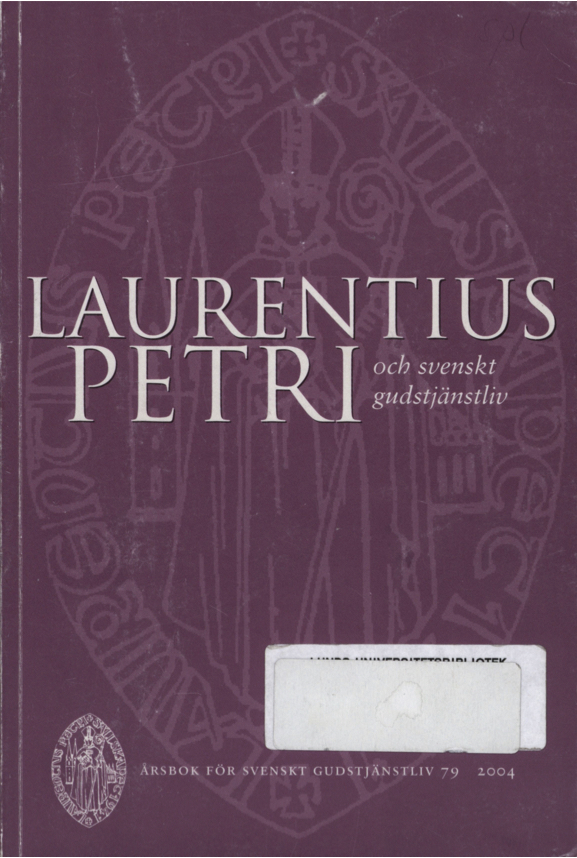Tidig mässång på svenska i Västerås stift
Abstract
Among the fragments of medieval parchment codices in the National archive, Riksarkivet, in Stockholm, is a double folio which now has the signature Fr 4286. It stems from one of the handwritten liturgical songbooks from the 16th century with Swedish texts but is exceptional as being so beautifully written on parchment. The fragment contains parts of the Gregorian ordinarium missae. It is believed to stem from Västerås, centre of a bishopric west of the Stockholm region, and to have been written after 1536. Similar parchment fragments from the same area have been found in the Uppsala landsarkiv.
In this study this group of fragments is put in connection with the first report of a Mass service with singing in Swedish celebrated in a church outside of Stockholm which happened in the autumn of 1535 in Rytterne church not far from Västerås. It caused so strong reactions that the newly elected bishop Henricus Johannis brought the matter to King Gustavus Vasa.
What was sung in Swedish must primarily have been the songs of the Mass ordinary. The bishop can have brought singers from Västerås with him for this purpose. These singers must have had access to songbooks where someone had adapted the words of the Swedish Mass printed in 1531 to the old melodies according to the special tradition of the Västerås bishopric. The undated songbooks from Västerås whereof only a few folios remain today can either be identical with the songbooks from 1535 or copies of these.
A somewhat younger paper manuscript from Transtrand in the same bishopric contains a complete version of the Swedish Mass ordinary of the fragments. Several melodic details in them were typical for the Västerås diocese already before the reformation.
A fact of international interest is that Agnus Dei has been replaced by Nicolaus Decius’ O Lamm Gottes in Swedish translation. It seems as if the Västerås songbooks are somewhat older than the oldest printed German version of this song which is regarded as the first German Kirchenlied, written already in 1523.
The parchment fragments seem to be a result of the steps that bishop Henricus Johannis took in 1535 towards the introduction of liturgical singing in the vernacular. Laurentius Petri, the first evangelical archbishop of Uppsala, was not the only initiator in this field.
Downloads
Publicerad
Nummer
Sektion
Licens
© författarna, Laurentius Petri Sällskapet för svenskt gudstjänstliv samt Artos & Norma bokförlag. Det är tillåtet att kopiera och använda material ur Svenskt Gudstjänstliv för forskningsändamål om källan anges. För övriga ändamål kontakta respektive artikelförfattare samt förlaget. Särskilda restriktioner kan gälla för bildmaterial.


